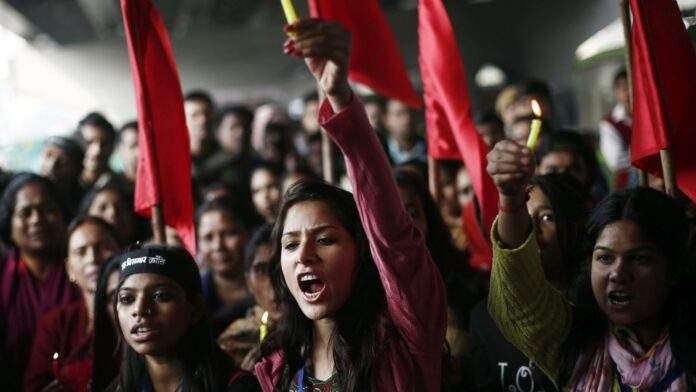Feminism in India has evolved significantly over the decades, shaped by the country’s diverse cultural, social, and political landscape. Today, feminism in India is not a monolithic movement but a complex and multi-faceted one, addressing a wide range of issues from gender equality and women’s rights to intersectionality and economic empowerment. This article explores the current trends in Indian feminism, highlighting key movements, challenges, and the path forward.
The Evolution of Feminism in India
Feminism in India has its roots in the colonial period when women began to challenge traditional patriarchal norms. The early 20th century saw women actively participating in the freedom struggle, advocating for social reforms such as the abolition of Sati (the practice of a widow immolating herself on her husband’s pyre), child marriage, and advocating for women’s education. Post-independence, the feminist movement gained momentum with a focus on legal reforms, women’s rights, and economic participation.
Current Trends in Indian Feminism
- Intersectional FeminismIntersectionality, a concept coined by Kimberlé Crenshaw, has become increasingly central to the feminist discourse in India. Indian feminists are acknowledging that women’s experiences of oppression and discrimination are not homogeneous but are influenced by factors such as caste, class, religion, sexuality, and disability. This recognition has led to a more inclusive feminist movement that strives to address the unique challenges faced by marginalized groups. Dalit feminism, for instance, has brought to the forefront the specific struggles of Dalit women who face both gender and caste-based oppression.
- Digital FeminismThe rise of social media has significantly transformed the feminist landscape in India. Digital platforms have become powerful tools for advocacy, awareness, and mobilization. Hashtag movements like #MeToo and #WhyLoiter have created spaces for women to share their experiences of harassment and discrimination, challenging the culture of silence and impunity. These movements have not only amplified women’s voices but also led to tangible changes in policies and attitudes towards sexual harassment and gender violence.
- Legal Reforms and AdvocacyLegal reforms continue to be a crucial focus of the feminist movement in India. Recent years have seen significant strides in this area, with landmark judgments and legislations aimed at protecting women’s rights. The decriminalization of Section 377, which criminalized homosexuality, was a major victory for LGBTQ+ rights. Similarly, the Supreme Court’s verdict on the Sabarimala temple entry, allowing women of all ages to enter the temple, was a significant step towards gender equality in religious practices. However, the implementation of these laws remains a challenge, necessitating continuous advocacy and monitoring.
- Economic EmpowermentEconomic empowerment is another key area of focus for contemporary Indian feminists. Women in India face significant barriers to economic participation, including limited access to education, employment opportunities, and financial resources. Initiatives aimed at promoting women’s entrepreneurship, financial literacy, and access to credit are gaining traction. The self-help group (SHG) movement, which encourages women to form collectives for savings and credit, has been particularly successful in empowering rural women economically.
- Cultural and Media RepresentationRepresentation of women in media and popular culture is undergoing a transformation, with increasing awareness about the importance of diverse and nuanced portrayals of women. Indian cinema, television, and literature are beginning to challenge traditional gender stereotypes and present women in more empowered and complex roles. Films like “Pink,” “Thappad,” and “Dangal” have sparked important conversations about consent, domestic violence, and women’s rights.
- Grassroots MovementsGrassroots activism remains a vital component of the feminist movement in India. Local women’s groups and NGOs are working tirelessly to address issues such as domestic violence, female foeticide, child marriage, and access to education and healthcare. These organizations often operate in challenging environments, where patriarchal norms and resistance to change are deeply entrenched. Their work is crucial in bringing about change at the community level and ensuring that the benefits of feminism reach the most marginalized women.
Challenges and Criticisms
Despite the progress made, the feminist movement in India faces significant challenges. One of the primary obstacles is the deeply ingrained patriarchal mindset that persists across all strata of society. This mindset often manifests in resistance to gender equality initiatives, victim-blaming, and the trivialization of feminist issues.
Moreover, the feminist movement in India is sometimes criticized for being urban-centric and not adequately representing the voices and concerns of rural women. The intersection of feminism with caste, religion, and regional disparities adds layers of complexity to the movement, making it essential to adopt a more inclusive and representative approach.
Another challenge is the backlash against feminist gains. The #MeToo movement, while empowering many women to speak out, also faced significant backlash, with accusations of false allegations and the defamation of accused individuals. This highlights the ongoing struggle to shift societal attitudes and ensure that feminist advancements are not met with regressive pushbacks.
The Path Forward
The future of feminism in India lies in its ability to adapt and respond to the changing socio-political landscape. Strengthening alliances across different social movements, such as those for Dalit rights, LGBTQ+ rights, and labor rights, can create a more unified front against oppression.
Education and awareness remain critical in changing societal attitudes. Comprehensive gender education in schools and community programs can help challenge and dismantle patriarchal norms from an early age. Additionally, leveraging technology and digital platforms can further amplify feminist voices and mobilize support for gender equality initiatives.
Finally, sustained advocacy for policy changes and effective implementation of existing laws is essential. Ensuring that legal reforms translate into real-world benefits for women requires continuous monitoring, public pressure, and accountability mechanisms.
Conclusion
Feminism in India today is a dynamic and evolving movement, shaped by a multitude of voices and experiences. While significant progress has been made, much work remains to be done to achieve true gender equality. By embracing intersectionality, leveraging digital platforms, advocating for legal reforms, and promoting economic empowerment, the feminist movement in India continues to push the boundaries and challenge the status quo. Despite the challenges, the resilience and determination of Indian feminists offer hope for a more equitable and just society.
ALSO READ: FAMOUS FEMINIST APARNA DUTTA MAHANTA FROM ASSAM PASSES AWAY AT 75












